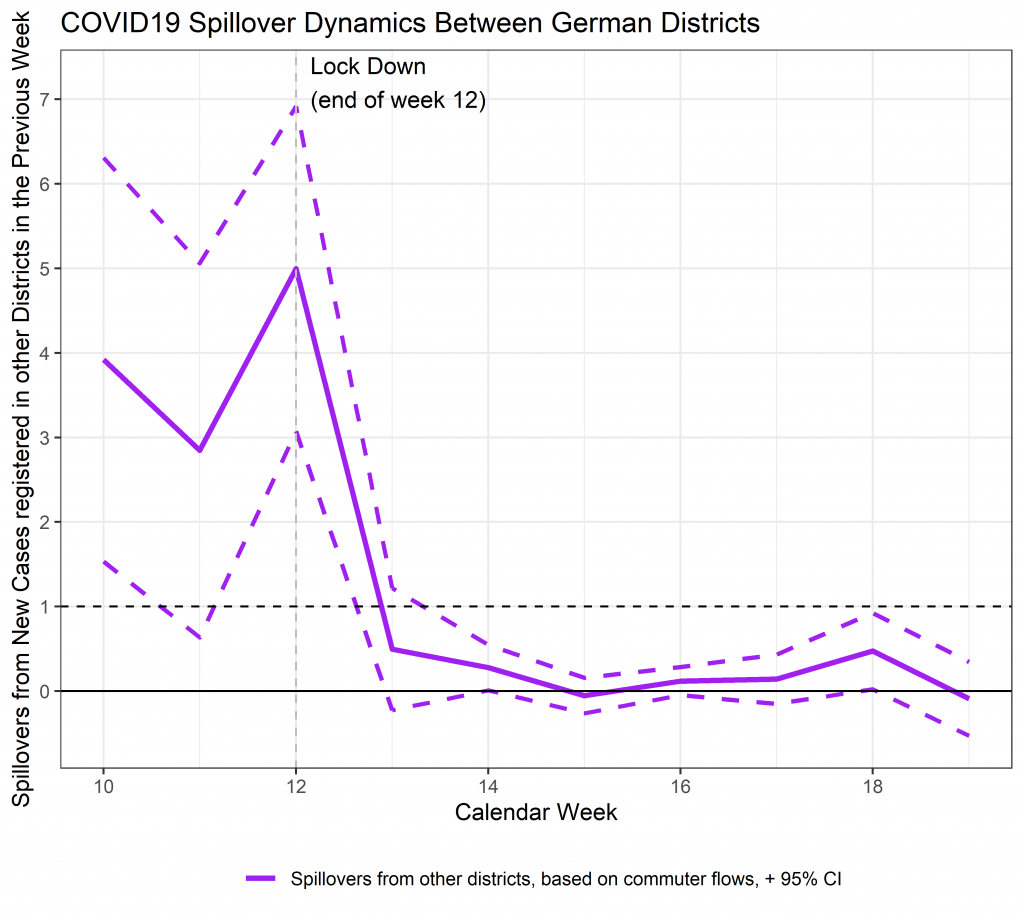Pandemics spread over space, and economic interactions facilitate how COVID-19 spread over the globe and within countries. Clearly, restricting economic interactions helps to slow down the spread of COVID-19 and other virus pandemics. However, it is important to understand better the efficiency of the measures taken.
How important are Commuter Relations for the COVID-19 spread over German Districts?

We investigate the dynamics of the first wave of COVID-19 in Germany up to the end of the contact and mobility measures introduced by German State governments on March 20-23. Commuter flows between German districts, as measured in 2019, can explain most of the overall dynamics in calendar week 12, and substantial shares of the dynamics in calendar weeks 10 and 11. This suggests that commuting to work should be limited wherever possible, and that home office arrangements should be extended. Further, the number of rainfall days in the previous week was a second important driver of the dynamics, suggesting that indoor contacts are much more important quantitatively than meeting other people outdoors.
Andreas Mense & Claus Michelsen (2020). Räumliche Ausbreitung von COVID-19 durch interregionale Verflechtungen. Wirtschaftsdienst 100(6), online first. DOI: 10.1007/s10273-020-2674-7. Link